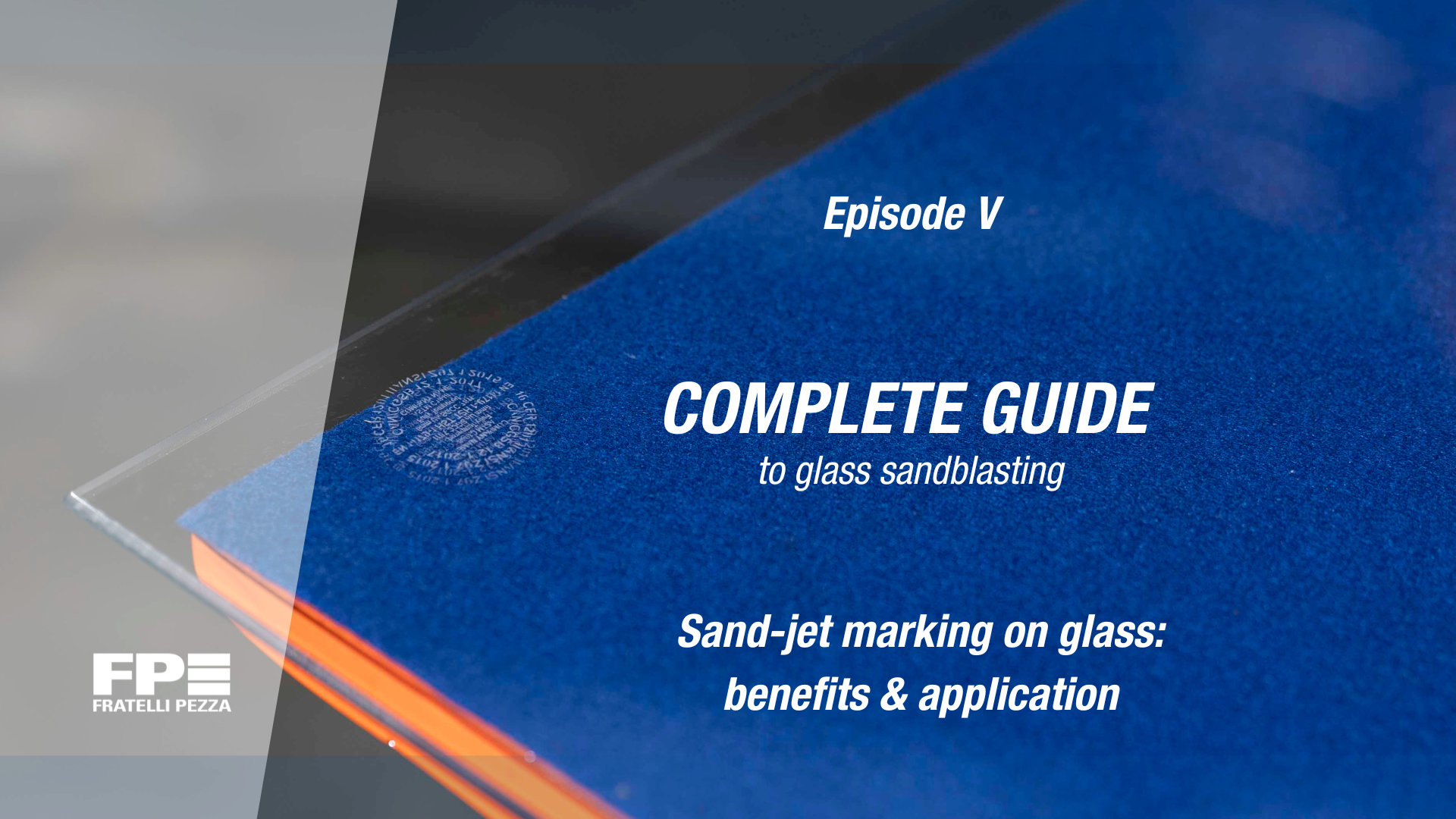
Sand jet marking on glass: How it works and why you should choose it
Sand jet marking on glass is a technique that’s increasingly appreciated across industrial, decorative, and design sectors for its precision, durability, and versatility. From large-scale manufacturing to high-end customisation, it offers an effective solution for businesses operating in technical, artistic, architectural, and Ho.Re.Ca. fields.
In this article, we’ll explore how the technique works, what advantages it offers over other technologies, and where it finds practical application.
What is sand jet marking?
Sandblasting involves the controlled abrasion of a glass surface using high-speed abrasive particles—usually aluminum oxide. This process allows for the permanent, high-definition engraving of logos, text, or decorative patterns. A stencil is used to mask off the areas that should remain untouched, leaving only the part to be treated exposed. The result is a precise, elegant satin effect that enhances the product’s aesthetic and stands the test of time.
The advantages of sandblasting glass marking
Compared to other marking technologies such as laser engraving or UV printing, sandblasting offers a number of benefits:
- Micrometric precision, ideal even for complex logos and technical texts
- Long-lasting engravings on glass and many other materials
- Full customization thanks to dedicated stencils: every client can request tailor-made markings suited to their style or technical needs
- Cost-effectiveness and ease of use, accessible even for small and medium-sized enterprises
- Sustainability: the process involves no solvents and can be made even more eco-friendly by adopting abrasive recycling systems, as seen in Fratelli Pezza machinery
From an aesthetic and functional standpoint, the final result is a clean, uniform engraving that doesn’t wear out over time and stands up well to chemical washing, light abrasion, and exposure to weather.
Moreover, the technique is highly versatile: not only can it be applied to many materials (ceramic, metal, stone, wood), but it also complies with European and international standards. This makes it particularly useful for engraving CE marks, identification codes, and other required information on safety glass or technical components. Last but not least, engraved markings add a higher perceived value to products, reinforcing brand identity in both B2B and B2C markets.

Applications: from artisans to industry
Whether it’s to make a design object unique or to ensure traceability of a technical component, sandblasting offers reliable solutions in a wide range of settings thanks to its adaptability and resistance.
Some of the main application areas include flat and architectural glass processing (such as doors, shower enclosures, and partition walls), where it is essential to integrate technical information or brand logos in a permanent and elegant way. Bathroom and decorative mirrors can also be customized with logos, functional icons, or decorative motifs—especially in wellness or contract environments.
In artistic and artisanal glasswork, sandblasting makes it possible to create patterns and decorations on colored glass or mirrors in single pieces or small production runs. Luxury packaging also benefits from the technique: engraving a perfume bottle, cosmetic container, or decorative vase, for example, adds value to the object.
A special mention goes to the Ho.Re.Ca. sector—short for Hotel, Restaurant, and Café/Catering. In this field, sandblasting is commonly used to engrave logos or patterns on glasses, carafes, bottles, and other tableware. The key advantage? The engraving is permanent, doesn’t fade with frequent (even industrial) washing, and gives each business a strong, recognizable visual identity that enhances the customer experience and reinforces the brand.
Finally, in the industrial and technical sectors, sandblasting is a strategic solution for glass components used in appliances, automotive, or technical equipment. Here, engraving serial numbers, batch codes, and symbols is not only useful—it is often legally required.
GLASS MARKING: Fratelli Pezza Solutions
Fratelli Pezza doesn’t just supply high-quality glass marking machines—it offers a complete system combining advanced technology, maximum operational flexibility, and personalized services. Thanks to in-house stencil production, it’s possible to carry out precise, custom processing in record time without interrupting production flow. All machines are ready for integration with Industry 4.0 systems—ideal for businesses looking to optimize process control and overall efficiency. A unique offering in the sector, designed for those who want more than just a reliable product—they want a true technology partner.
Available solutions include:
- EASYMARKER EV+ and UP+ – Vertical and horizontal automatic marking machines, ideal for integration into production lines. They can operate in manual or fully automatic mode and are ready for 4.0 system connection.
- MARKER T – Compact, portable, and intuitive, designed for flexible, precise marking even in small spaces.
Choose Fratelli Pezza for your glass marking needs
Need help choosing the right glass marking machine for your production needs? Contact us for a free, personalized consultation! We’ll analyze your production process together and help you select the best solution to meet your specific requirements. All Fratelli Pezza machines are designed to ensure reliability, precision, and production time optimization, while extending stencil lifespan and boosting overall efficiency.